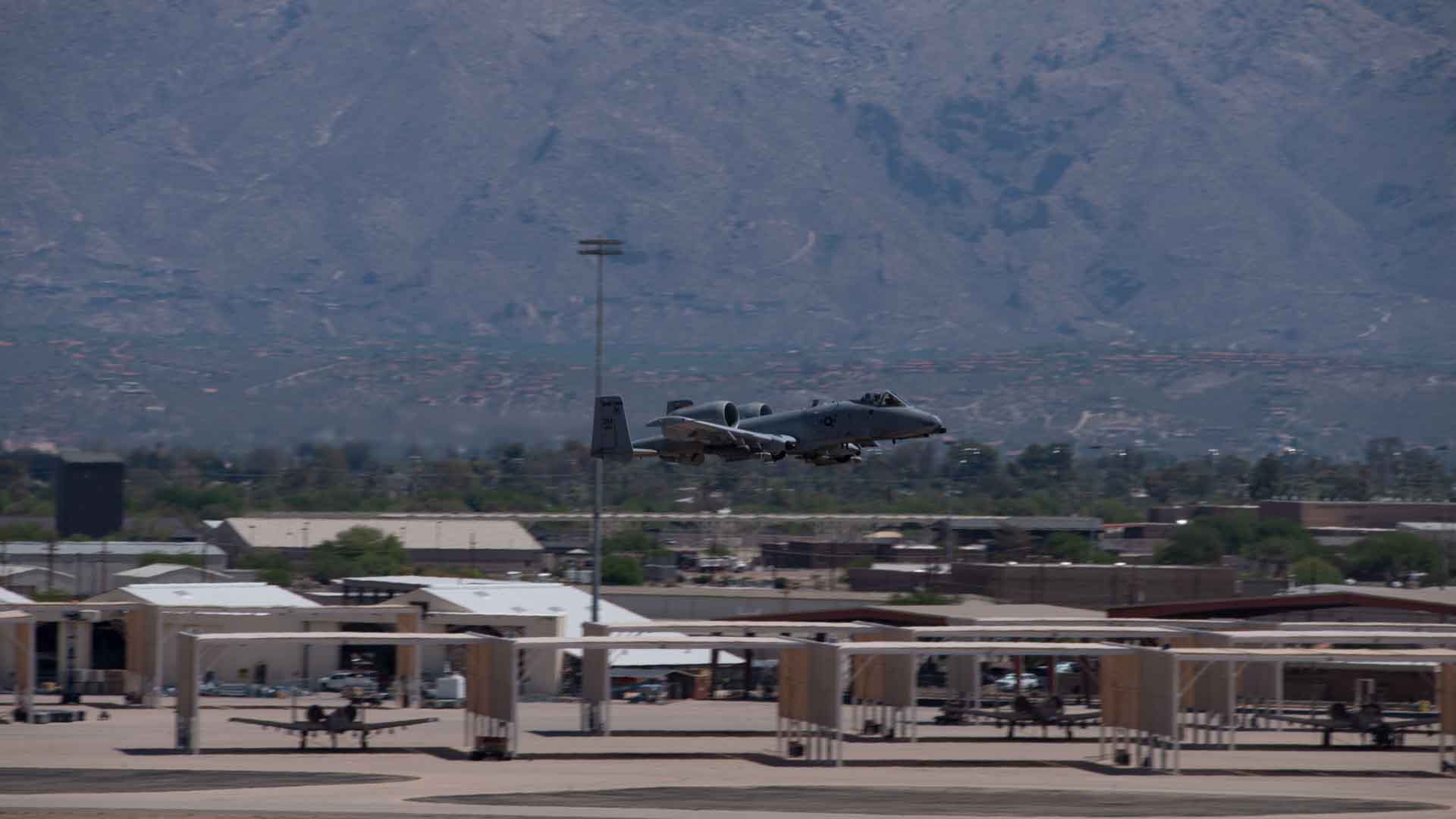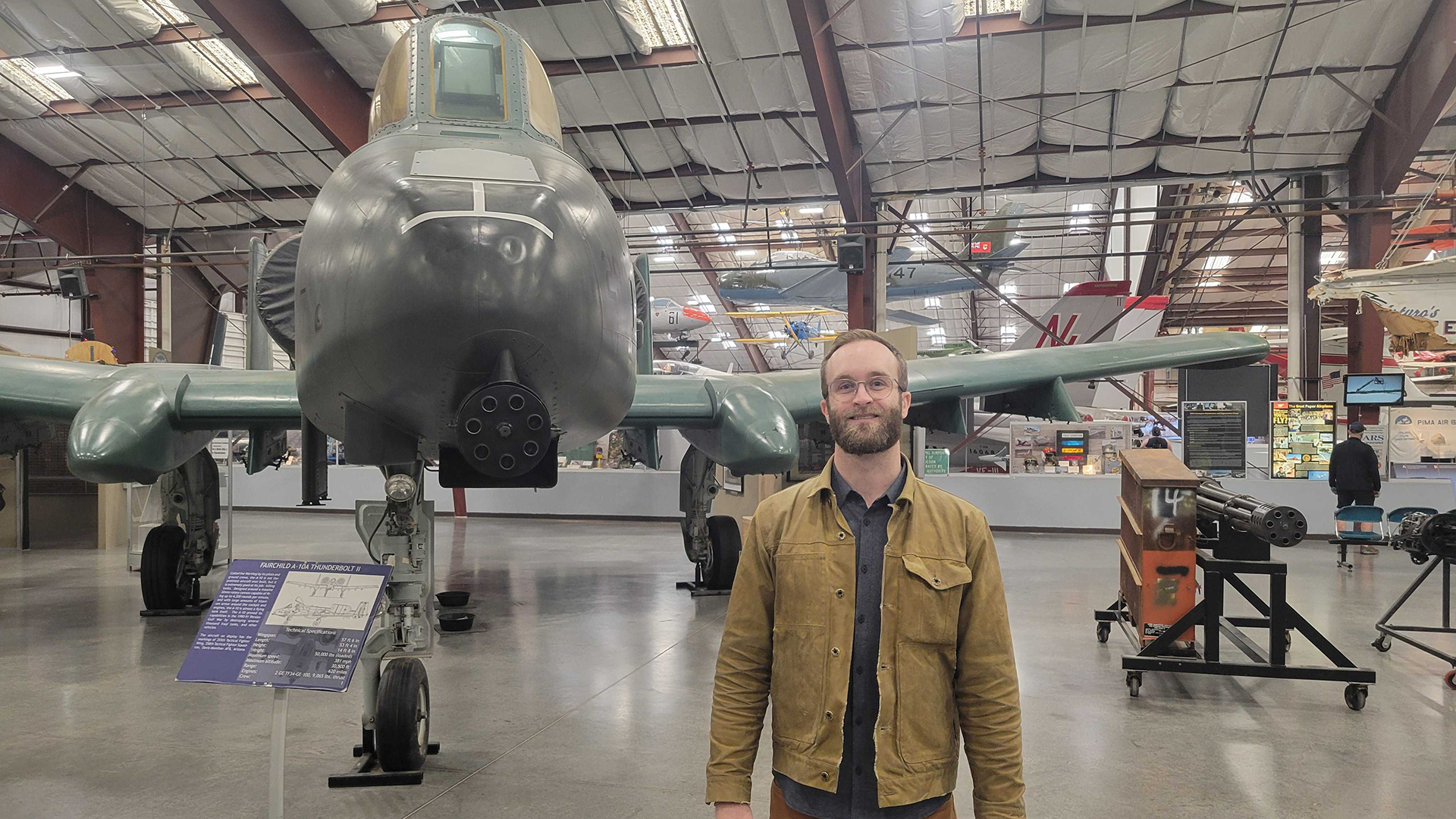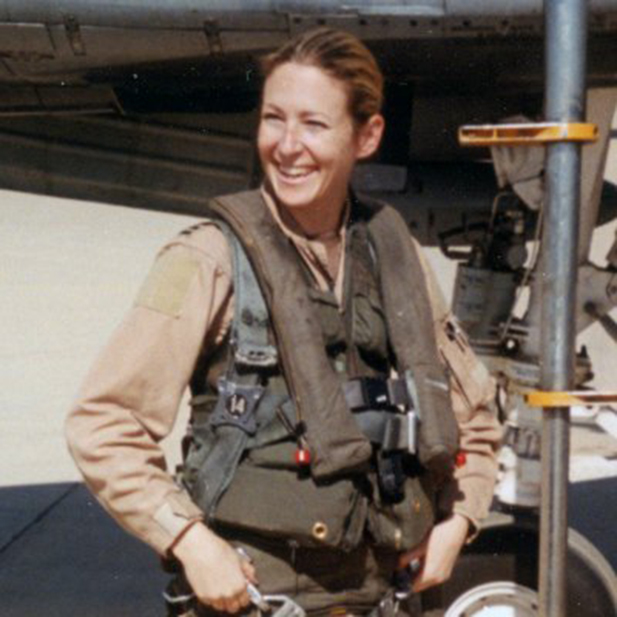 An A-10 makes a pass over the runway at Tucson's Davis-Monthan Air Force Base. July 2021.
An A-10 makes a pass over the runway at Tucson's Davis-Monthan Air Force Base. July 2021.
The Buzz for March 22, 2024

Southern Arizona has started a long goodbye to a familiar sight and sound in our skies. Since 1976, that sound, A-10s flying in and out of Davis Monthan Air Force Base, has become a familiar sound, but it's going away. The Air Force is moving the jets to the boneyard for storage, and plans to retire all of its A-10s by 2029.
When it was introduced, the A-10s ability to fly slow and low made it revolutionary for air-to-ground combat, according to Hal Sundt, author of War Plane: How the military reformers birthed the A-10 Warthog.
 Author Hal Sundt stands in front of the A-10 Warthog at the Pima Air and Space Museum.
Author Hal Sundt stands in front of the A-10 Warthog at the Pima Air and Space Museum.
"What made this challenging and first is that no one had ever designed an airplane to be accurate at shooting the ground, which is such a funny thing to think about when they first were conceiving of the airplane, before it was even going to a design phase when they were coming out on paper with, 'Hey, what does this thing need to do?' The gun was at the center of the airplane. And so they literally started with the idea that we need this gun that can presumably destroy tanks, and we're going to build everything out from it."
Sundt said the innovations go deeper than that.
"I think the innovation that went into this airplane is not just the airframe itself but the processes and methods that went into testing it so that the folks that I spent a lot of time with, Pierre Sprey and others, who were kind of known as the military reformers, they were the in many ways the guiding spirit behind this thing. One thing they really believed in was relentlessly testing and prototyping projects, rather than just trusting it to be theoretical models and things like that."
 An A-10 from Davis-Monthan Air Force Base fires its gun at the Goldwater Range during the Hawgsmoke competiton. June 2016
An A-10 from Davis-Monthan Air Force Base fires its gun at the Goldwater Range during the Hawgsmoke competiton. June 2016
The A-10 was thought to be nearing the end of its lifetime in the 1990s, but it found a new life in when U.S. troops entered into a war with Iraq.
"The A-10 was used a lot for hunting tanks in the Gulf War, but it ended up doing a whole bunch of other missions as well that hadn't exactly been anticipated when they were first conceiving of this airplane. In fact, if we think about the A-10, a close air support platform. What's kind of ironic is that in Desert Storm, it really did very little close air support at all, but it did quite a bit of hunting tanks, bombing targets. Although it was intended to do one thing extremely well, it actually did demonstrate its ability to be this Swiss Army Knife of sorts, which was quite surprising and fun to think about in retrospect."
It was used to similar effect in the early 2000s, when the U.S. invaded Afghanistan and Iraq. It was during those years that Air Force Colonel Kim Campbell found herself flying the plane in support of troops.
"I actually was really passionate about the A-10 from the start. And so it was really my top choice coming out of pilot training. For me, it was all about the mission. And so I learned in pilot training talking to other pilots. And keep in mind this was pre-9/11, my time going through pilot training. So the A-10 just wasn't quite as prominent as it is today. But for me, it was all about the mission, supporting our troops on the ground. I love talking to other pilots who had done that mission and shared with me how important it was and how critical it was."
 A-10 pilot and Air Force Colonel Kim 'KC' Campbell
A-10 pilot and Air Force Colonel Kim 'KC' CampbellThe A-10's ability to fly low and slow was another major draw for Col. Campbell, who ended up flying nearly 2,000 hours and more than 100 missions over a 24-year career.
"I actually think it's a lot of fun to fly at those low levels. And talking from training missions and my experience flying out on the ranges in Arizona, it's a great opportunity to test your skills and work on your skills and work on task management. Because there's not a lot of time or room for error when you're that close to the ground. But it's an opportunity for us. And you know the reason we can fly low level as we can hide from threats and stay in the terrain."
That training and familiarity came in handy when she was part of a mission that earned her the Distinguished Flying Cross.
"By this time in the war, it was April 7, 2003. Our ground troops were in Baghdad and approaching Baghdad. And so, a little bit more high threat than normal, there was a lot more firefights going on. And just as any A-10 pilot would do, when the troops call for our assistance, we're gonna go in and help them out in any way we can. And that's exactly what we did that day was a mission over Baghdad, the difference was, the weather wasn't great. So we got a little bit lower than we normally do to get down below the weather to support our ground troops. And as I was coming off my last weapons pass, I felt and heard a loud explosion at the back of the airplane and turns out a missile that hit the back of my airplane, sent shrapnel through the fuselage and tail sections and unfortunately damaged my flight control system. So immediately, I had no control over the airplane, it's really plummeting down to Baghdad below at that point. And my only option other than ejecting, which was not a good option was to put the jet into our backup emergency system. Thankfully flipped that switch. And it worked exactly as it was advertised and was able to get that airplane back climbing."
Campbell was able to fly the plane more than an hour back to Kuwait and land it using manual controls. The plane had hundreds of holes, and had sustained damage to one engine, the redundant hydraulic systems, flight controls, landing gear and brakes.
"It's just a very reliable, durable airplane, which means we can do the job that we're trained to do supporting our ground troops, take some hits and make it back safely. It was still a pretty long trip back to base, that was for sure with that amount of damage. It was probably the longest hour of my life trying to figure out what I was going to do, if I was going to try to land that airplane or eject. I chose to land it back in friendly territory, thankfully it kept me safe."




By submitting your comments, you hereby give AZPM the right to post your comments and potentially use them in any other form of media operated by this institution.